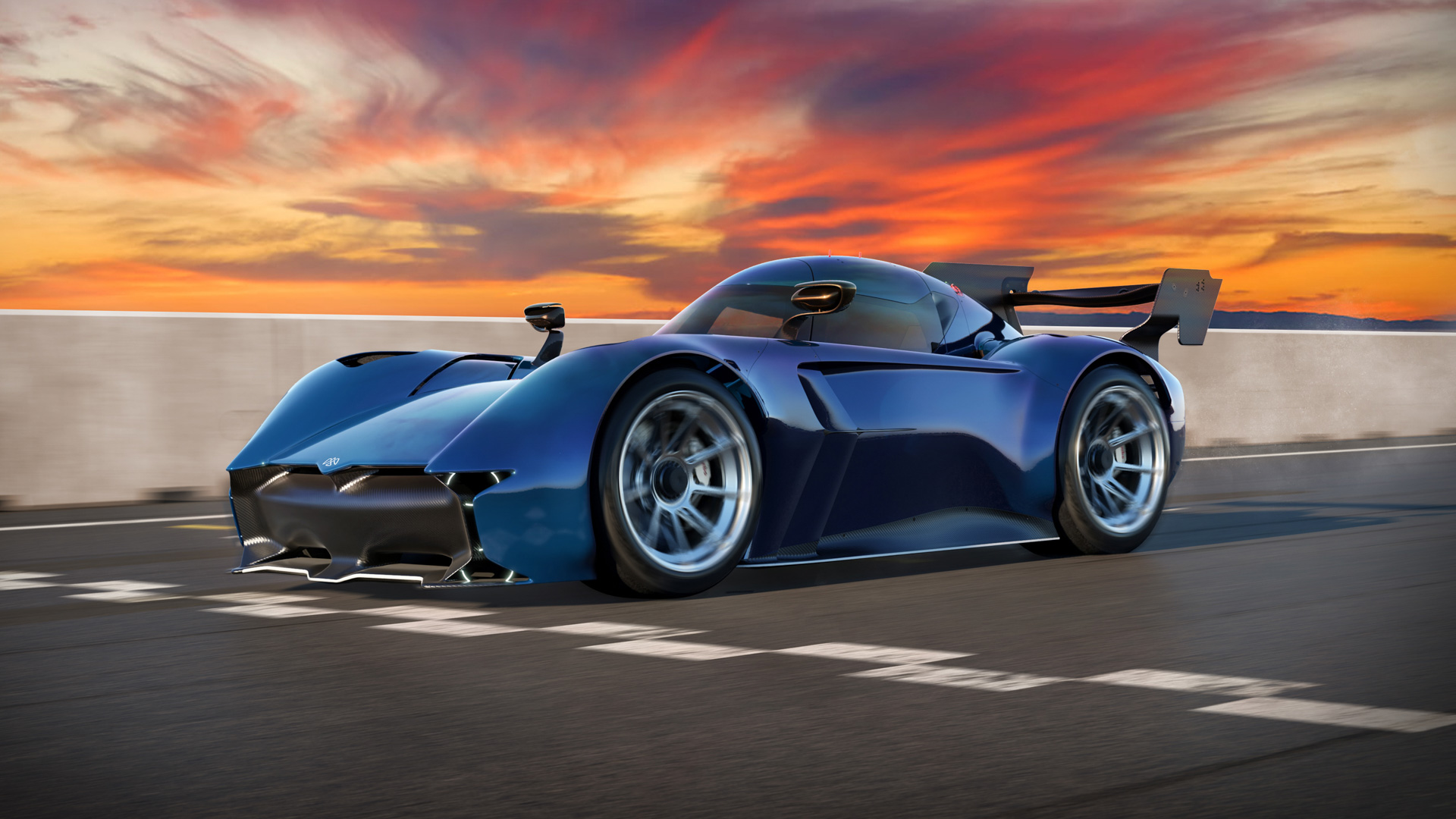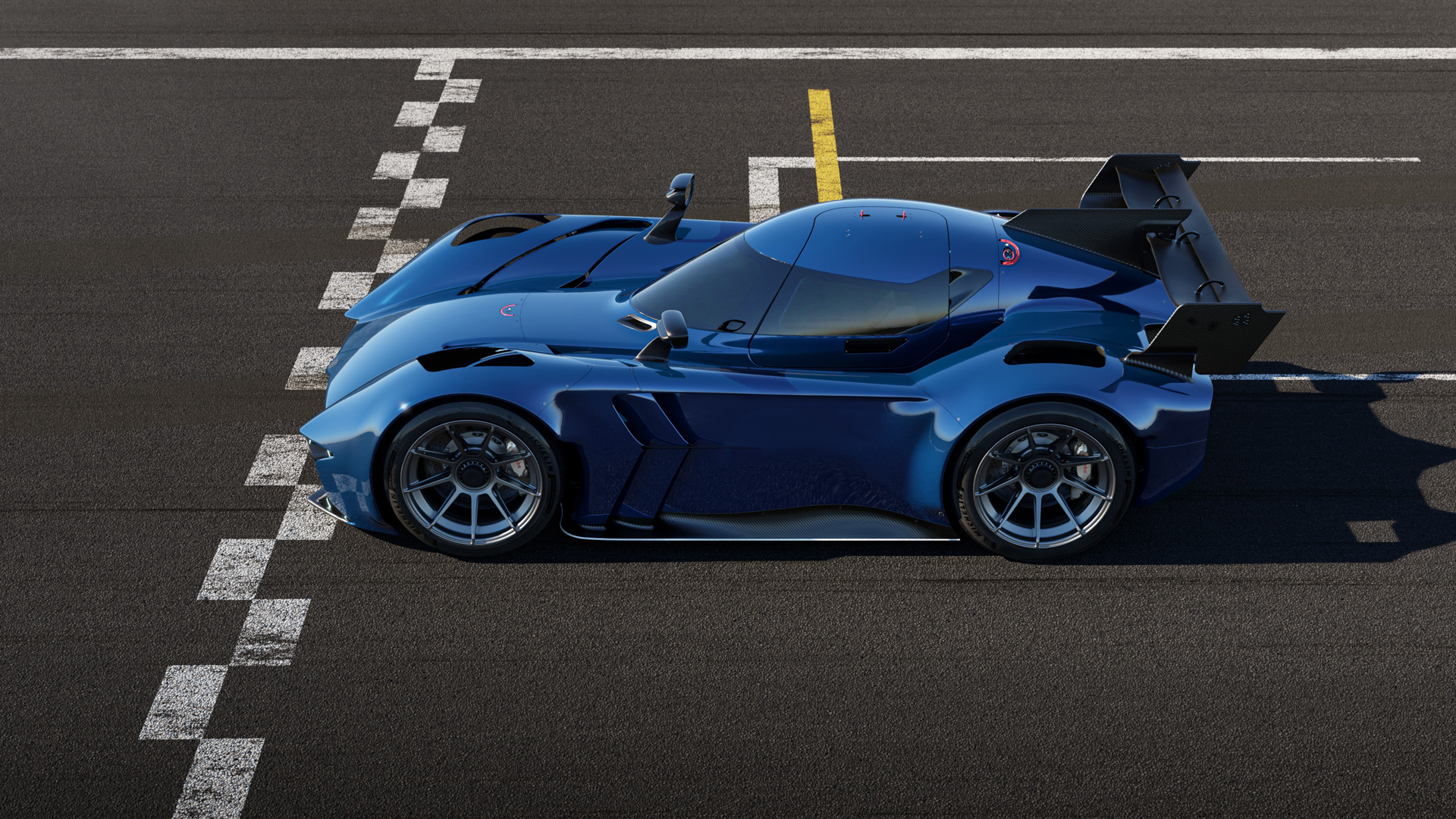
Little-known British electric car startup McMurtry caused a stir last summer when its Spéirling smashed the Goodwood hill climb record, completing the 1.16-mile course in 39.08 seconds.
Fast-forward a year, and it will soon be possible to buy a Spéirling for yourself. An updated version that promises even more performance than the one-off Goodwood record car, the Spéirling Pure is a track-only electric car that promises Formula One levels of performance for a fraction of the price.
We say a fraction, but these things are relative and the Spéirling Pure still carries a price tag of £820,000 ($1 million). Plus tax. Add a couple of optional extras and you can call it a nice, round £1m here in the UK.
For that you get a tiny electric car measuring just 1.02m tall, 1.58m wide and 3.45m long, yet which produces 1000 bhp (745kW). It has a 60 kWh battery pack, weighs under 1,000 kg and can be fully charged in just 20 minutes.

But the big news with the Spéirling is its electric fan system. Spinning below the car, a pair of powerful fans suck the Spéirling to the road to create a huge amount of downforce. How much? McMurty said the Goodwood car has over 2,000 kg of downforce – and unlike a race car that uses wings and diffusers to build downward suction with speed, the Spéirling generates maximum downforce all of the time, even while standing still. This is a car with F1 levels of downforce, but at any speed.
McMurtry previously said how its car can launch to 60 mph in just 1.4 seconds and cover a standing quarter-mile in 7.97 seconds. The company says its new Spéirling Pure has a top speed of 190 mph, and its battery pack can be recharged in just 20 minutes.
Outright performance for the new Pure variant isn't known for now, with McMurtry saying it can hit 60 mph in under 1.5 seconds and cover a quarter-mile in under 8.0s, giving tantalising room for improvement on these initial benchmarks.

Designed to accommodate drivers up to 6’7” tall and weighing 150 kg, the Spéirling Pure has a number of upgrades over the Goodwood record version.
It has a new fan system with 15 percent greater efficiency, a 14 percent weight saving and “significantly enhanced tolerance to flow variation,” McMurtry says.
The Pure version also benefits from a lighter battery and chassis, a new electrical architecture that saves 35 percent on wiring loom mass, wider tyres, larger wheels that are also lighter than before, re-engineered suspension and gearbox, and weight savings for both the braking system and power steering unit.
Rather than just a garage showpiece, McMurtry says the Spéirling Pure is eligible for the GT1 Sports Club, which is a hypercar driving programme that takes place during SRO GT World Championship race weekends at International FIA circuits in Europe, Asia and America. In other words, Spéirling Pure owners will be able to race their car against other customers on world-famous circuits.
Unlike the original Spéirling, which was intended for drag racing and hill climbs, the Pure model has an electric drivetrain designed for constant use and quick charging, making it more suited to track days and circuit racing.
A prototype of the Spéirling Pure will be shown off at the Goodwood Festival of Speed in July, before pre-production prototypes arrive in 2024 and the production run – limited to 100 examples – will arrive with customers from 2025.







